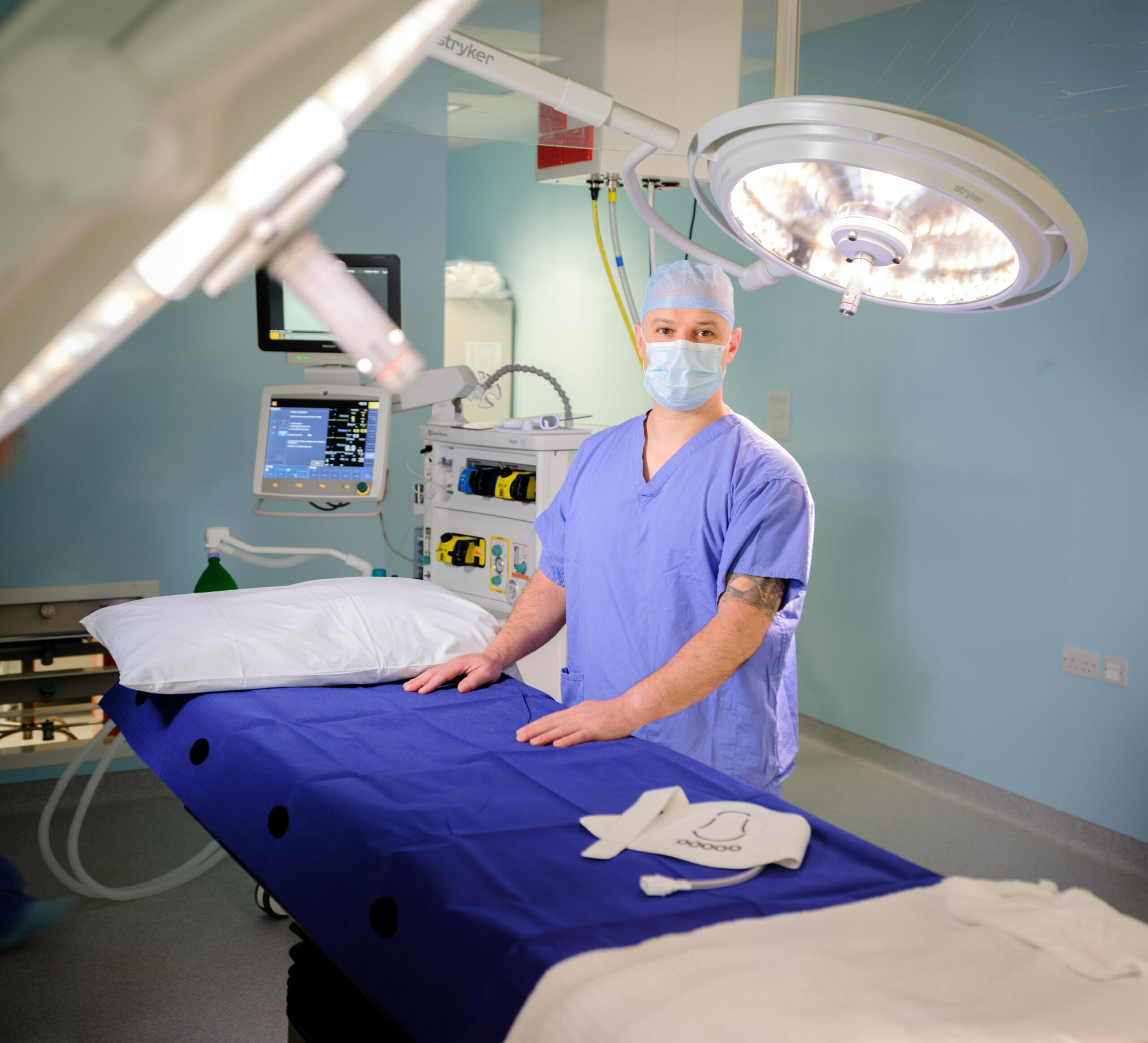Back pain is one of the biggest causes of disability in the UK, accounting for approximately 11% of all disabilities across the population. Lower back pain in particular is a very common type of back pain which can wreak havoc on people’s day-to-day life.
However, understanding some of the underlying causes of lower back pain may surprise you. Lower back pain can sometimes be brought by an entirely different part of the body: your hip.
Among various others, hip joint osteoarthritis is one of the main causes of lower back pain, making it crucial to understand not only how the condition affects your body but also which treatments are available.
In this blog post, we take a detailed look at how hip joint osteoarthritis impacts your lower back, assessing its associated symptoms and teaching you how to manage it effectively.
Understanding lower back pain
Lower back pain is a prevalent, debilitating health problem that can significantly affect your quality of life. Various factors contribute to the cause and development of lower back pain and each one will need unique, personalised treatment to provide you with relief.
Causes of lower back pain
Although you may think your lower back pain is caused solely by problems with your back, one of the more common underlying causes is hip joint osteoarthritis. However, some other factors and conditions can cause lower back pain too, including:
- Degenerative changes in your spine
- Muscle problems including tears
- Reduced physical activity
- Nerve compression
With so many different potential causes, it’s important to diagnose the root cause. If your lower back pain is caused by hip joint osteoarthritis, for example, then both your hip and back will need to be addressed to ensure you receive comprehensive care.
Hip joint osteoarthritis: an overview
Hip joint osteoarthritis is a degenerative condition that causes changes to the cartilage (strong connective tissue) in the head of your femur, or thigh bone, and the acetabulum, the joint socket in your pelvis.
These changes lead to a gradual thickening and shortening of the tissue that encases your hip joint, drastically reducing your range of motion and limiting your mobility. Over time, this can cause pain in not just your hip, but also your lower back.
Osteoarthritis is usually more common in people over the age of 45 and is more often found in women. You may also have a higher risk of developing hip joint osteoarthritis if you have a job that involves heavy lifting and long periods of standing. Being overweight can also be a potential risk factor as it puts extra strain on your joints.
Symptoms of hip joint osteoarthritis
Hip joint osteoarthritis causes a wide range of symptoms, including lower back pain. However, there are several other problems it can cause. For example, having hip joint osteoarthritis can result in:
- Groin pain
- Thigh pain
- Stiffness in your joints, particularly in the morning
- Reduced or limited range of motion
- Clicking or grinding noises when you move
- Inflammation around your hip joint
- Changes to the way you walk
- Loss of strength and stability in your hip
- Difficulty with weight-bearing activities such as walking up stairs or standing up from a chair
- Knee pain
It’s important to note that the severity of these symptoms can not only vary from person to person but, as the condition is degenerative, they can also change over time.
The connection between lower back pain and hip joint osteoarthritis
While lower back pain can be caused by different conditions, hip joint osteoarthritis is a common culprit, yet not many people are aware of the link between the two
However, once you understand that hip joint osteoarthritis extends beyond just your hip joint, it's easy to see both how and why it could cause discomfort in your lower back.
How does hip joint osteoarthritis affect my lower back?
As the soft tissue in your hip joint changes, your ability to rotate your hip in the same way becomes more limited. This restriction causes your body to overuse surrounding joints like your knees and lower back to handle the strain, causing pain and discomfort.
The hinging motion you would normally perform when bending forward is also restricted when you have hip joint osteoarthritis. This causes a tightness in the muscles in front of your hip and leads to an exaggerated curvature of your lower spine.
Over time, this change can result in compression of the discs in your spine and make your lower back more susceptible to strain, due to overcompensating for your hip joint.
Managing lower back pain linked to hip joint osteoarthritis
Effectively managing lower back pain linked to hip joint osteoarthritis isn't always easy. It can take trial and error and repetitive treatment to find the right relief. Management will also need to be multifaceted to address both your lower back pain and your hip joint osteoarthritis.
Physiotherapy is the first line of treatment for hip joint osteoarthritis. This is because it can help restore your range of motion and enhance the flexibility of the soft tissues in the joint. It can also help increase the amount of muscular control you have in your hip joint.
Pain relief medications can be an effective management strategy too. Non-steroidal anti-inflammatory drugs (NSAIDs) can be recommended or prescribed to alleviate inflammation caused by hip joint osteoarthritis.
If physiotherapy and pain relief medications do not work, corticosteroid (steroid) injections may be administered to help reduce pain and inflammation. However, these may not be as effective in the hip joint as they can be in other areas of the body. This is because accurately injecting into the hip joint is extremely difficult.
Lower back surgery may be a recommended treatment option for you if your pain is severe. Hip replacements can also be used to provide relief and remove the cause of your overall discomfort.
Prevention strategies
While it’s not always possible to prevent hip joint osteoarthritis or lower back pain from occurring, there are several things you can do to lower your risk. Prevention often needs to start from a young age and continue as you get older. But it's never too late to make changes and enhance your overall health.
Some of the best ways to support a healthy hip joint and reduce your risk of osteoarthritis include:
- Maintaining a healthy weight – excess body weight puts extra strain and pressure on your hip joints and lower back. Leading a healthy lifestyle that involves regular exercise and a balanced diet can help reduce your risk of hip joint osteoarthritis.
- Staying physically active – regular, low-impact exercise can promote joint health as well as your overall fitness. Activities such as swimming, cycling and walking are all gentle on your joints.
- Being aware of your posture – poor posture can contribute to joint pain over time. Try to maintain good posture every day, especially when sitting. Good posture can prevent strain and tension being unnecessarily placed on your body, including your lower back.
- Avoid a sedentary lifestyle – prolonged inactivity can contribute to stiffness in your joints. If you lead a sedentary lifestyle, try to incorporate some gentle exercise into your routine and stretch throughout your day to keep your joints healthy.
- Perform heavy lifting properly – always make sure you follow proper heavy lifting techniques. Never lift with your back and always bend at the knees, not the waist.
- Avoid repetitive strain – be mindful of movements you make throughout your day that are repetitive. Try to vary your activities and be aware of how you're using your back and hip joints.
By incorporating these different strategies, you can potentially reduce your risk of hip joint osteoarthritis and keep your joints healthier for longer.
Book a consultation with Horder Centre
Hip joint osteoarthritis and lower back pain are closely connected. Osteoarthritis can exasperate lower back pain and have a significant impact on your daily life. However, by taking proactive measures and adopting a healthy lifestyle, you can find relief and reduce your risk of osteoarthritis developing.
If you've been experiencing persistent lower back pain or are struggling with hip joint osteoarthritis, book a consultation at The Horder Centre. Our expert team is here to provide you with the diagnostics and tailored treatment plans you need to reduce your lower back pain.
We are a leading physiotherapy provider
Health & wellbeing information
We offer a range of health and wellbeing articles, recipes and exercise videos to enable people to self manage conditions and make healthy lifestyle choices, as well as preventing the development of musculoskeletal problems.





